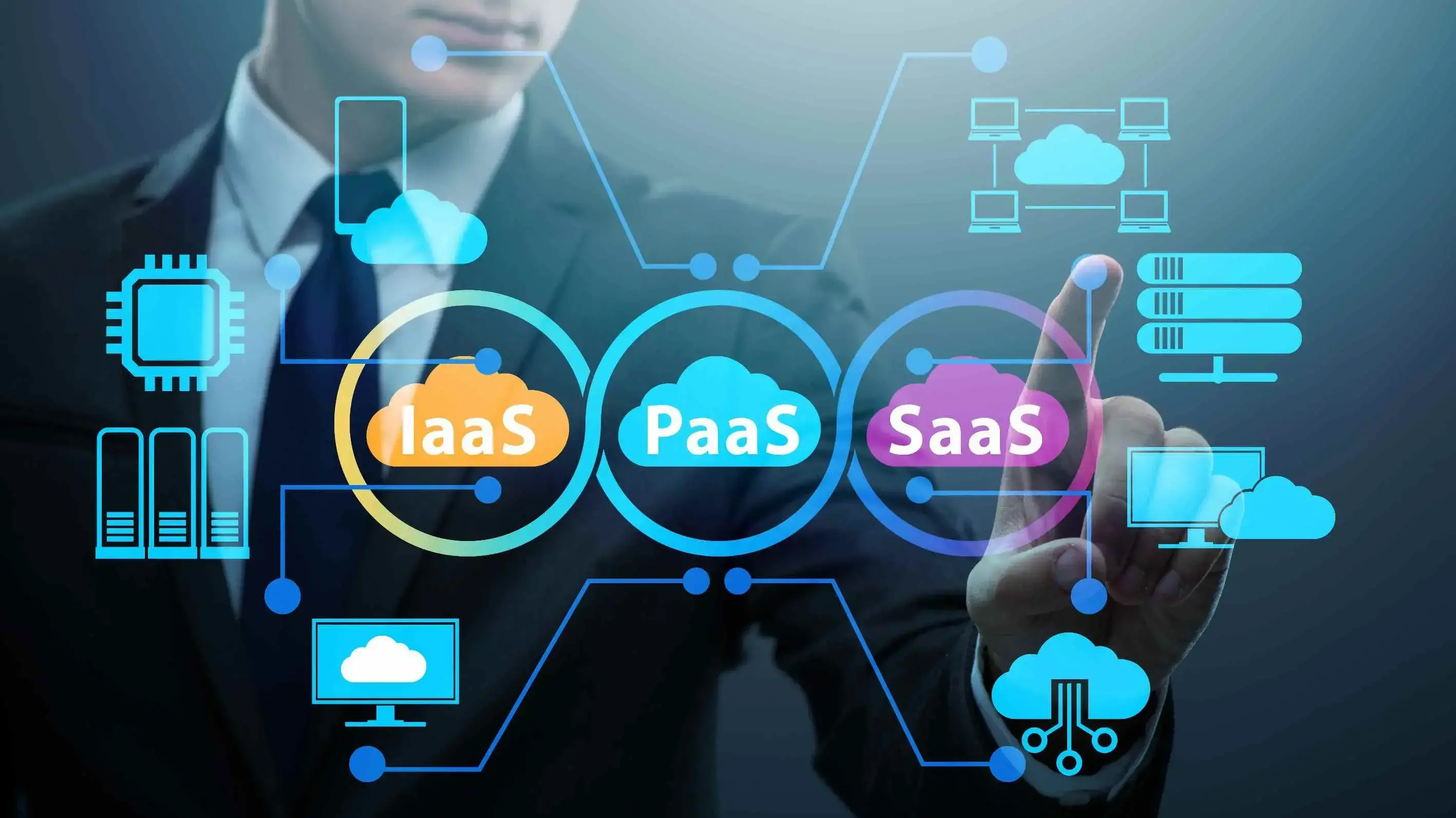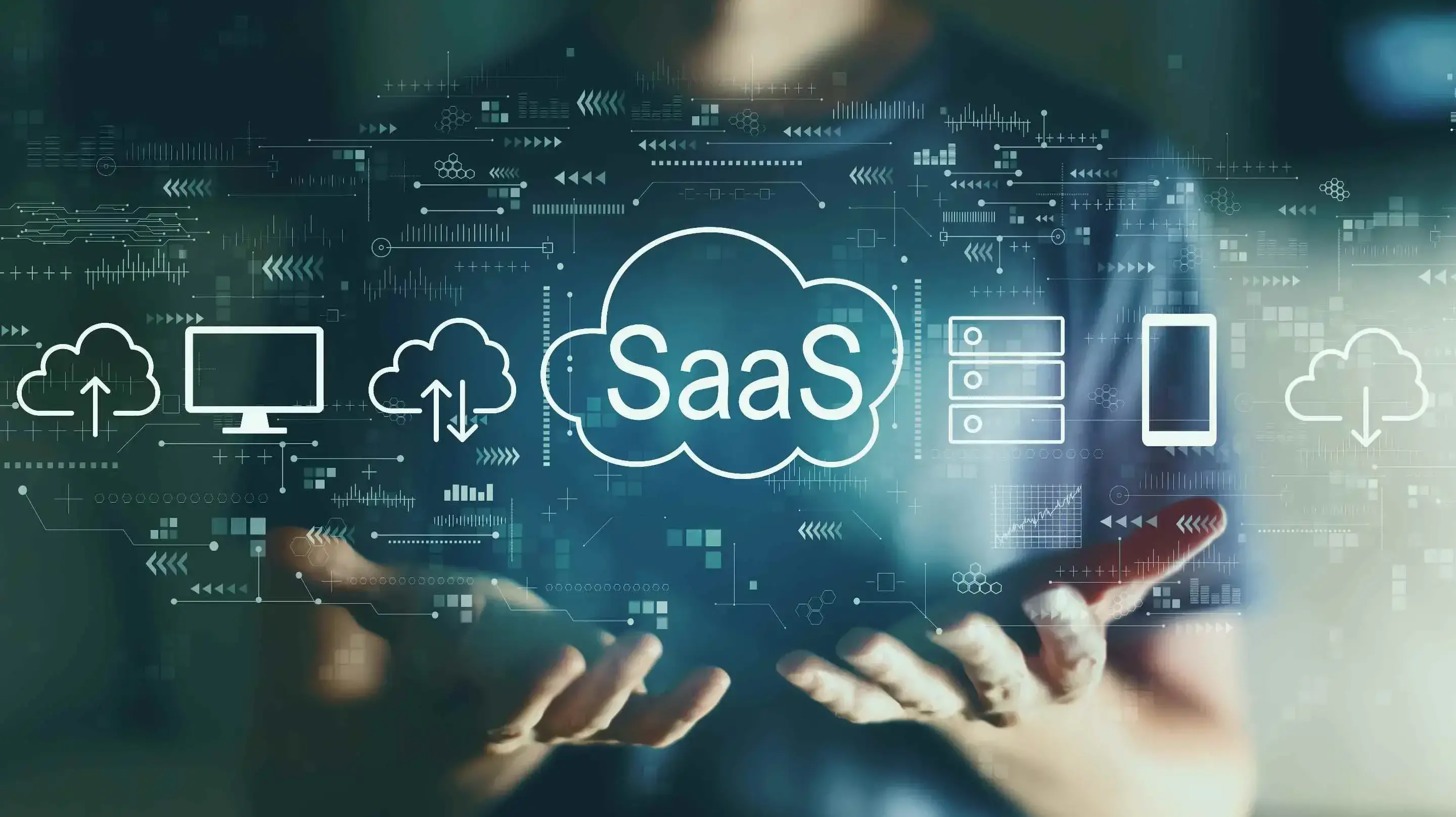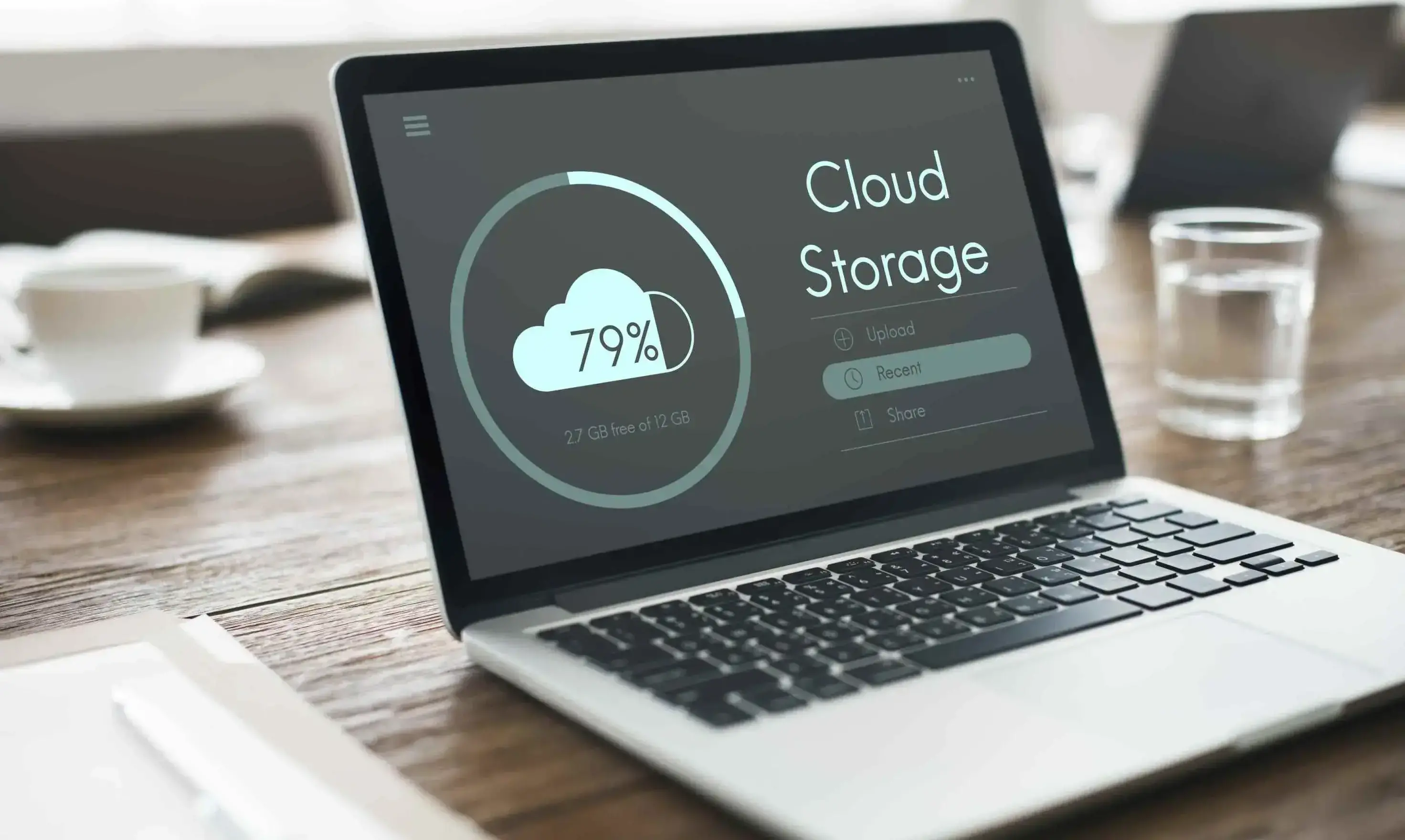Periodically, a new technological trend sweeps the online world, and cloud computing has been one such revolution.
Among its innovations, SaaS has emerged as a prominent solution, now utilized by roughly 99% of businesses in at least one form.
This article covers everything you need to know about SaaS, what it offers, and how you can benefit from this service industry.
What Is SaaS?
SaaS, short for Software-as-a-Service, is a cloud computing model that delivers software over the cloud.
How Does SaaS Work?
SaaS delivers software over the internet, eliminating the need for installation and enabling easy access from any device.
- Users have network access to applications and data.
- Data can be stored locally or in the cloud.
- Integrates easily with existing on premises software via APIs.
- Simply log in to your subscribed SaaS application to begin.
Businesses and individuals often use SaaS applications for various setups:
- Sales management
- Customer relationship management (CRM)
- Financial management
- Human resource management (HRM)
- Collaboration
- Billing
Benefits and Drawbacks of SaaS
Benefits
Drawbacks
Benefits of SaaS
- Easily accessible: Access SaaS anytime, anywhere via an internet connection on any device.
- Managed by provider: Providers handle updates and maintenance with no installations or traditional licensing.
- Good value: Offers flexible pay-as-you-go or subscription models without upfront hardware costs.
- Robust scalability: Easily scales and adapts to changes quickly.
- Data Storage: Regularly stores data in the cloud.
- Accessible analytics: Provides easy access to reporting and intelligence tools.
- Superior security: Emphasizes strong security measures and technology.
- User-friendly: Tools are easy to use without professional assistance.
Drawbacks of SaaS
- Limited control: Providers manage everything, leaving you dependent and with little control.
- Restricted customization: Most SaaS providers offer limited customization options.
- Increased latency: SaaS apps may be slower and have more latency than client/server apps.
- Complex compliance: You must understand relevant regulations and handle compliance issues independently; providers don't manage this for you.
Examples of SaaS
BigCommerce: Online store creation, SEO, and hosting platform.
Google Workspace: Cloud computing resources, productivity, and collaboration tools.
Dropbox: Cloud storage, file synchronization, and personal cloud services.
Salesforce: Cloud-based CRM, customer service, marketing automation, and analytics.
Cisco WebEx: Web and video conferencing, unified communications service.
SAP Concur: Travel and expense management.
GoToMeeting: Online meeting and video conferencing.
Zoom: Video conferencing and online meeting platform.
MailChimp: Email marketing service.
Adobe Creative Cloud: Creative software and services.
GitHub: Code hosting and collaboration platform.
Xero: Online accounting software.
JetBrains: Software development tools.
ZenDesk: Customer service software.
DocuSign: Electronic agreement service.
Slack: Team collaboration and communication platform.
Lumen5: Video creation platform.
FutureFuel: Student loan management.
Squibler: Writing and project management tool.
Buffer: Social media management.
Amazon Web Services, HubSpot, Cloud-Based Microsoft Office 365, Visme, Canva, GSuite, Workday, Acumatica, Service Now.
Considerations for Onboarding SaaS
SaaS serves small businesses and startups wanting quick, software-free eCommerce setups.
It's ideal for short-term projects requiring simple and affordable collaboration.
SaaS works well for occasionally used applications.
Businesses and individuals needing web and mobile access typically choose SaaS vendors.
It's excellent for businesses that require access to applications from any location on all devices.
Types of SaaS
CRM Software
Ideal for businesses handling sensitive data, CRMs store and secure data efficiently, enhancing customer relationships and automating tasks for B2C companies.
Examples include Salesforce and MailChimp.
HR Software
Helps manage work schedules, track performance, and retain valuable employees efficiently.
Examples include Breathe HR and People HR.
Enterprise Resource Planning(ERP) Software
Used for managing daily operations like accounting and supply chain, with some offering performance management.
ERPs are essential for various businesses, with a significant market value.
Accounting Software
Tracks finances and billing, streamlines cash flow management, and improves data entry efficiency. Popular providers include Quickbooks and Chargebee.
Project Management Software
Ideal for businesses with multiple projects, it helps plan, track, and coordinate tasks. Examples include Trello and GitHub.
Email Marketing Software
Simplifies creating, sending, and tracking personalized emails, a crucial strategy with high engagement rates. These services are popular in nearly every industry.
Choosing the Right SaaS Vendor

When choosing a Software-as-a-Service — SaaS cloud service provider, it's crucial to consider several key criteria to ensure the right fit for your business needs.
Here are the essential factors to evaluate:
Data Security and Compliance
- Verify that the vendor follows industry-standard security protocols.
- Check for compliance with relevant data protection regulations (e.g., GDPR, HIPAA).
Scalability and Performance
- Ensure the SaaS provider can scale with your growing business needs.
- Test the performance of the system under peak loads.
User-Friendly Interface
- Evaluate the user interface for ease of use and intuitive navigation.
- Conduct user trials or demos to gather feedback on user experience.
Customization and Integration
- Determine if the SaaS model solution allows for customization to meet specific requirements.
- Assess its compatibility with existing traditional software and APIs for seamless integration.
Support and Maintenance
- Inquire about the vendor's customer support channels and response times.
- Understand the maintenance schedule and update procedures.
Cost and Pricing Model
- Calculate the total cost of ownership, including subscription fees, setup costs, and potential add-ons.
- Choose a pricing model that aligns with your budget and usage patterns.
Data Ownership and Portability
- Clarify ownership rights for data stored on the platform.
- Ensure you can easily export your data if you decide to switch vendors.
Vendor Reputation and References
- Research the vendor's reputation through customer reviews and testimonials.
- Request references from current clients to gather insights on their experiences.
Training and Onboarding:
- Inquire about available training resources and onboarding support.
- Determine if the vendor offers comprehensive documentation or training sessions.
Service Level Agreement (SLAs)
- Review SLAs to understand commitments regarding uptime, support response times, and issue resolution.
- Ensure they align with your business requirements.
Data Backup and Recovery
- Assess the vendor's data backup and recovery processes to safeguard against data loss.
- Verify their disaster recovery capabilities.
SaaS in Industry Verticals
Software-as-a-Service (SaaS) solutions have found their way into various industry verticals, transforming operations and enhancing efficiency.
Healthcare: SaaS streamlines EHR management, enables remote care via telemedicine, and improves medical billing.
Education: Enhances e-learning and digital classrooms, simplifies student management, and provides collaborative tools.
Manufacturing: Optimizes supply chain, enables predictive machinery maintenance, and improves quality control.
Finance: Secures online banking, streamlines accounting and audits, and supports risk management.
Retail: Powers e-commerce, manages inventory and orders, and enhances CRM for better shopping experiences.
Legal: Offers management software for legal practices, streamlines case and document management, and improves e-discovery.
Nonprofit Organizations: Aids in donor and volunteer management, grant tracking, and program impact assessment.
Government: Supports e-government services, enhances public record management, and automates administrative tasks.
Entertainment: Enables content distribution, supports streaming services, and enhances audience analytics.
Hospitality: Facilitates hotel management and booking, enhances guest experiences, and streamlines event management
Other Cloud Service Types
PaaS
Platform-as-a-Service (PaaS) offers hardware and software tools over the Internet.
This cloud service model is ideal for users looking to develop applications. The PaaS provider hosts the necessary hardware and software platforms.
IaaS
Infrastructure-as-a-Service (IaaS) provides on-demand access to cloud-hosted physical and virtual servers, storage, and networking resources, with a pay-as-you-go payment model.
IaaS vs. PaaS vs. SaaS

The key difference between each model is the level of control they afford.
SaaS: Provides applications via the Internet without the need for installation or downloads.
PaaS: Used for developing custom applications; offers platforms and frameworks while managing cloud infrastructure.
IaaS: Offers a pay-as-you-go model for resources used, allowing more control and flexibility.
IaaS Control: Offers the most control over applications, data, runtime, operating systems, and middleware.
PaaS Control: Allows control over applications and data.
SaaS Control: Provides the least control, with responsibility only for the data created within the software(data centers).
You can read more in our article “Battle Royale: IaaS vs. PaaS vs. SaaS”
Final Thoughts: What does the future hold for SaaS?
The future of SaaS looks promising. Many providers expect a surge in its use, particularly for integrated mobile experiences.
AI is also anticipated to significantly influence SaaS, especially in logistics, transport, and retail.
With its constant evolution and numerous benefits, SaaS remains a desirable option for both users and providers, ensuring continual relevance for the foreseeable future.
Frequently Asked Questions
Will cloud hosted websites be backed up?
Yes, Verpex performs daily backups of all sites hosted.
Why should I try a managed cloud server?
We’d highly recommend using a managed service, especially if you don’t have the technical skills to run a website. It might cost a little extra, but it certainly takes the stress out of site management.
Do I need technical knowledge to use cloud hosting?
Not necessarily. Under a fully managed hosting package Verpex will take care of all the technical aspects for you.
How easy is it to increase bandwidth on cloud servers?
Incredibly easy. Since you’re in a pool of other servers you can draw on those resources at any time. If you need to increase your bandwidth or storage limits just give us a call and it can be done instantly.

I've been navigating the web hosting waters for years now. As the Chief Editor at Verpex, I team up with some awesome writers to dish out the good stuff on hosting. Got a Master's in Journalism, so I always have an eye out for quality. Whether you're just dipping your toes or you're a seasoned surfer, I'm here to make everything web hosting feel like a breeze
View all posts by Julia Lozanov

















